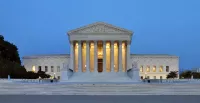The Clarity Act, enacted by the Parliament of Canada, outlines the conditions under which the federal government would engage in secession negotiations with a province following a vote in favor of separation. Introduced as Bill C-20, it was designed to clarify the process and requirements for a province to secede from Canada, particularly in response to the Quebec sovereignty movement. The Act specifies that a clear majority on a clear question would be necessary to trigger negotiations, leaving the interpretation of 'clear' to the Parliament.
June 12, 1995: Agreement signed related to the future of Quebec
On June 12, 1995, an agreement was signed related to the future of Quebec. This agreement was referenced in the referendum question, which asked if Quebec should become sovereign after offering Canada a new partnership within the scope of the bill respecting Quebec's future and the agreement signed on this day.
1995: Quebec referendum question challenged
In 1995, Stéphane Dion, later appointed Minister of Intergovernmental Affairs, challenged the legal validity of the Quebec referendum question through open letters to Quebec's Premier and Intergovernmental Affairs Minister.
1995: Quebec referendum
In 1995, the Clarity Act was created in response to the 1995 Quebec referendum and the ongoing independence movement in that province. The Quebec referendum saw a narrow vote against sovereignty.
1996: Stéphane Dion appointed Minister of Intergovernmental Affairs
In 1996, Prime Minister Chrétien appointed Stéphane Dion as Minister of Intergovernmental Affairs. Dion challenged Quebec sovereigntist assertions regarding the legal validity of the 1995 Quebec referendum question.
1996: Introduction of Quebec Contingency Act (Bill C-341)
In 1996, a private member's bill, the Quebec Contingency Act (Bill C-341) was introduced. This bill aimed to establish conditions for a referendum regarding Quebec's separation from Canada, but it did not proceed beyond the first reading.
August 1998: Supreme Court rules on Quebec secession
In August 1998, the Supreme Court of Canada ruled that Quebec cannot unilaterally secede under Canadian or international law. However, the court stated that the Government of Canada would have to negotiate with Quebec if Quebecers expressed a clear will to secede.
1998: Secession reference to the Supreme Court of Canada
In 1998, the federal government of Prime Minister Jean Chrétien made a secession reference to the Supreme Court of Canada. The content of the Clarity Act was based on this reference.
October 1999: First International Conference on Federalism
In October 1999, Stéphane Dion hosted the First International Conference on Federalism in Mont Tremblant. During the closing speech at the conference, United States President Bill Clinton appeared to echo the Supreme Court Reference, warning that serious questions should be asked regarding minority rights and cooperation with neighbors when a people thinks it should be independent.
December 1999: Draft of Clarity Act presented to House of Commons
On December 13, 1999, the Clarity Act (Bill C-20) was drafted and presented to the House of Commons. This was met with opposition from all provincial parties in the Quebec National Assembly, the Bloc Québécois, and many federalists.
March 2000: Passage of Clarity Bill by the House of Commons
In March 2000, the Clarity Bill was passed by the House of Commons. The bill outlined the conditions under which the Canadian government would negotiate secession following a vote by a province.
June 2000: Senate Passes Final Version of Clarity Act
In June 2000, the Senate passed the final version of the Clarity Act. This act set the stage for how the Canadian government would handle negotiations regarding secession, following a provincial vote.
May 2005: Jacques Parizeau comments on Clarity Act
In May 2005, former premier of Quebec, Jacques Parizeau, stated in an interview with CTV News that the Clarity Act "meant nothing" and would be ignored.
December 2005: Jack Layton backs the Clarity Act
In December 2005, New Democratic Party leader Jack Layton announced that he backed the Clarity Act during a federal election.
Mentioned in this timeline

Bill Clinton the nd U S President - served as...
The United States of America is a federal republic located...

News encompasses information about current events disseminated through various media...
Canada is a North American country the second largest in...

A supreme court the court of last resort in many...

A house is a residential building ranging from simple huts...
Trending

USA Basketball USAB is the governing body for basketball in the United States a non-profit representing the nation in FIBA...

1 minute ago Ken Jennings' surprising income from 'The Simpsons' role revealed: Residual checks explained.

2 minutes ago Vince Gill and Amy Grant: Navigating Blended Family, Marriage, and Health Challenges Together.

2 minutes ago Hail Threatens Overnight: Severe Storms and Thunderstorms Possible Tonight and Thursday.
2 minutes ago Sandra Bullock's Grisham adaptation surges on Netflix; 'Boys From Biloxi' series in development.
6 days ago Oracle's AI Investment Sparks Wall Street Sell-Off and Analyst Concerns Over Profitability.
Popular

XXXTentacion born Jahseh Dwayne Ricardo Onfroy was a controversial yet...

William Franklin Graham III commonly known as Franklin Graham is...

Cristiano Ronaldo often nicknamed CR is a Portuguese professional footballer...

Candace Owens is an American conservative political commentator and author...

Bill Clinton the nd U S President - served as...

Michelle Obama is an American attorney author and former First...